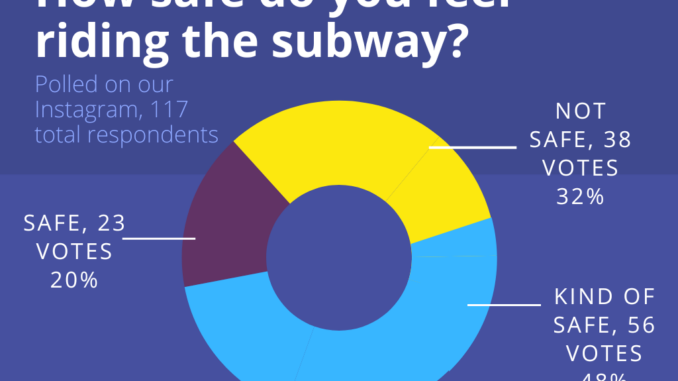
By Michelle Castillo
For the past few months, the MTA has been finding new ways to combat the violent crimes happening in the subways, testing new ways to improve its transit systems and bringing in changes to New York’s infamous subways to improve riders’ experience.
There has been an increase in the number of people involved in tragic accidents on the tracks, leading the MTA to pilot a program to install platform barriers to prevent people from falling onto the train tracks, according to the New York Times.
A report from the MTA’s “Actions for Rider Safety & System Reliability,” had planned to install platform screen doors, but after analyzing stations in a study, only 128 out of 472 stations met the standard to support a platform screen door. Another concern they face is the high cost of seven billion with an annual maintenance of approximately over $119 million. The task force recommended they install platform screen doors in only three stations.
Recently, MTA had been installing small metal barriers as an alternative to the platform screen doors. So far they have been installed in stations in Bedford Avenue on the L line, Clark Street on the 2 and 3 lines, Crescent Street on the J and Z lines, DeKalb Avenue on the L line, Grand Street on the L line, First Avenue on the L line, Fifth Avenue on the 7 line, Morgan Avenue on the L line, 57th Avenue on the F line, and 191st Street on the 1 line.
More metal barriers are to be installed in more stations by the end of the year. “The goal is to install one to two stations a month, depending on timing for the delivery of materials,” said MTA spokeswoman Kayla Shultz via the New York Post. Shultz also told reporters that the barriers were being tested in the L and 7 lines, but there was no explanation given as to why.
MTA has also plans to address the issue of gun violence as city officials raise concerns over weapons entering the station, as many of subway crimes have involved a weapon such as a firearm, according to abc7NY.
There have been efforts by Governor Kathy Hochul and Mayor Eric Adams to reduce subway crimes. In March, Hochul brought in hundreds of National Guard soldiers, as well as police officers, to patrol certain stations and perform bag checks, according to Reuters. Hochul said the checks were intended to deter crime based on the high amount of assaults.
Mayor Eric’s Adam also announced a gun-detecting scanner to be put on subway stations, with the first installed at the Fulton Center subway station on July 26, according to CBS News. Officials also noted that the technology will also be able to detect other weapons, such as razors. Adams said the plan is to have one on select stations and will be moved at different stations at different times, and any rider who refuses to comply will not be allowed in the station.
“Our transit system is the lifeblood of our city,” said Adam during a press conference with the MTA on July 17. “All of these various train lines are arteries that makes sure that blood continues to flow, and it must flow without any form of impediments to prevent us from moving forward.”
As of Sept. 4, the New York Police Department has announced a decrease in subway crimes, making 2024 the third safest year on record for subway crimes. However, violence still occurs, most recently on Sept. 5, a 47-year-old was fatally shot inside the Rockaway Avenue station in Ocean Hill, leading to a search for the murderer.
When asked by Brooklyn College’s own student body how they felt while riding the subway via an Instagram story poll, 23 (20%) said they feel safe, 56 (48%) said they feel kind of safe, and 38 (32%) said they don’t feel safe. Out of these 117 respondents, 94 felt some degree of being unsafe while riding the subway.
More has yet to come as MTA still has plans to improve the safety of its riders. To leaders working safety improvements, it is of their utmost importance to make sure every rider has a safe ride.
“I am focused on traditional safety and security, but also on investing in the system in all the ways I’m talking about to make it safer,” said MTA Chair and CEO, Janno Lieber. “We need to look forward to the investments that we can and must make.”
